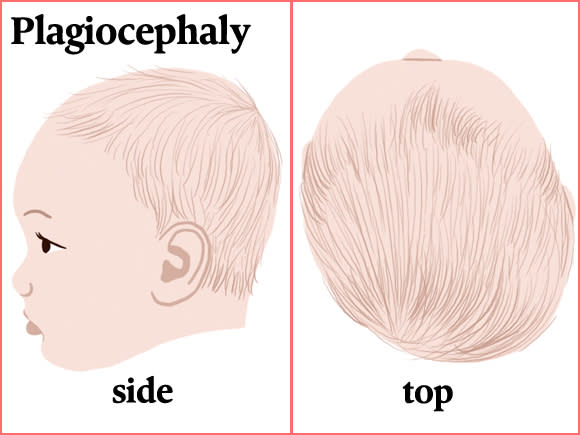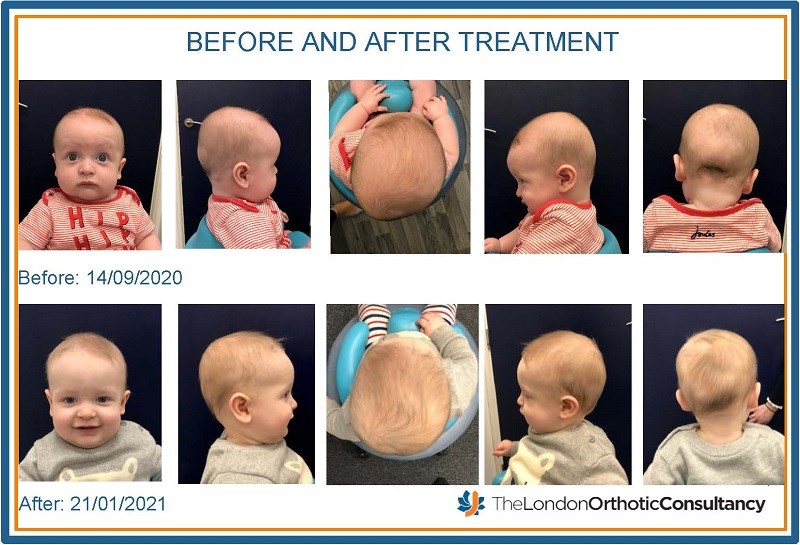When babies are born, their heads are shaped a certain way, but as they grow, their heads begin to form incorrectly. Plagiocephaly (a curve in the spine of a baby’s head), flat head syndrome (a head that doesn’t curve evenly), and others can result. Don’t wait to schedule a free evaluation with Cranial Technologies if you or your baby is struggling with any of these conditions!
Plagiocephaly: what is it?

In Plagiocephaly, the head is not properly positioned on the neck, causing a number of problems, including flat head syndrome and breathing difficulties. The best way to treat plagiocephaly is through cranial technologies, which use tools like helmets and cranioplasty to correct the position of the head.
It is a birth deformity in which the head is not properly positioned on the spine, causing a number of physical and mental health complications for babies and young children.
It is possible to treat plagiocephaly with surgery, orthotics, and chiropractic care. Surgery may be required to correct the deformity and improve the child’s health. Orthotics or custom-made shoes may help to keep the child’s head in its proper position and to relieve pain. Chiropractic care may help to improve spinal alignment and relieve pain.
Consult your doctor or pediatrician if you are concerned about your child’s plagiocephaly. They can provide information on the various treatment options and ensure your child receives the best possible care.
Flat head syndrome: what is it?
In babies with plagiocephaly and flat head syndrome, the skull is too curved. This can cause problems with the baby’s brain and lead to a variety of developmental issues. As a treatment for babies with this condition, cranial technologies are a common choice. They use special devices to correct the skull’s shape.
In some cases, only small adjustments are necessary, while in others, surgery or the implantation of a device into the skull may be necessary. The cranial technologies used in this treatment vary based on the severity of the case. All cranial technologies share one goal: helping babies with plagiocephaly and flat head syndrome develop their brains and improve their function.
Babies with flat head syndrome commonly have difficulty feeding and sleeping due to their protrusion. Treatment typically includes wearing a helmet to help support the head and proper positioning during sleep, as well as medication to improve sleep quality. Cranial Technologies provides the best treatment for babies with plagiocephaly and flat head syndrome because they use state-of-the-art technology to provide accurate measurement and adjustment of helmets that support the baby’s head.
Plagiocephaly and flat head syndrome causes
Plagiocephaly is the most common birth defect of the skull, and it is caused by pregnancy. Flat head syndrome is another name for plagiocephaly.
Several factors can contribute to plagiocephaly and flat head syndrome, but genetics and environmental factors play a major role. It is possible for a baby to develop an abnormally shaped skull, a problem with their spine, or a problem with how their muscles near their brain develop that causes plagiocephaly.
Your doctor can do some tests if you suspect your baby might have plagiocephaly or flat head syndrome while you are pregnant. If you have flat head syndrome, your doctor may recommend surgery to correct the deformity. Your doctor can conduct some tests to determine whether your baby has this condition and how severe it is.
It is possible to reduce the severity of plagiocephaly if you are pregnant. It may be recommended by your doctor to take precautions during pregnancy (like getting plenty of exercise) and to breastfeed your baby when possible. Your child may have difficulty in school and in life due to his or her appearance if flat head syndrome is not corrected through surgery.
Plagiocephaly and flat head syndrome symptoms
Parents may notice some symptoms in their babies that indicate plagiocephaly or flat head syndrome. Plagiocephaly is characterized by a curved or flattened head, difficulty feeding due to protrusions of the tongue, and difficulty breathing due to narrowed airways. Some babies with plagiocephaly also have vision problems.
For babies with plagiocephaly and flat head syndrome, surgery is often necessary to correct the deformity. The most common type of surgery is a craniotomy, which involves opening the skull to correct the deformity. A forehead lift or neck fusion may also be required. Following surgery, many babies will need physical therapy to improve their breathing and vision as well as learn how to use their new head shape.
Plagiocephaly is a rare birth defect that results in an abnormal curvature of the skull. Flat head syndrome is another common birth defect that occurs when the head doesn’t have the normal round shape. Babies with plagiocephaly and flat head syndrome can have major breathing, feeding, and learning difficulties.
Plagiocephaly or flat head syndrome cannot be diagnosed in a single test, but doctors usually use a combination of tests to determine if a baby has it. X-rays and brain scans might be used to assess whether the baby has an abnormal curve in the neck, muscle abnormalities in the neck, or other abnormalities.
In some cases, a baby with plagiocephaly or flat head syndrome may require surgery to correct the condition. A ventriculoperitoneal shunt (a device that helps drain excess fluid from the brain) may also be necessary to reshape the skull or fix any abnormalities causing the abnormality.
For babies who have plagiocephaly and flat head syndrome, many treatments are available. Depending on the severity of the condition, babies may need physical therapy to help improve their posture and movement skills; medication to help improve their respiratory function; helmets that support their necks; or surgery to correct their skull defect.
Plagiocephaly and flat head syndrome treated with cranial technologies

Plagiocephaly and flat head syndrome can be treated with cranial technologies in many ways. Here are some of the more popular treatments:
Botox injections to relieve skull muscle tension.
Realigning the skull and scalp by means of fiberoptic surgery.
Cranioplasty, which involves replacing a part of the cranium (skull).
Plates, screws, and skin grafts are used to reconstruct facial features.
In conclusion
We have been providing the best treatment for babies with flat head syndrome and plagiocephaly since 1978 at Cranial Technologies. We are committed to helping as many children as possible achieve their full potential through our proprietary techniques, which have helped thousands of children worldwide. Do not hesitate to contact us if you or your child suffers from a condition that our treatments can help improve. Our team will be glad to discuss your options with you.
